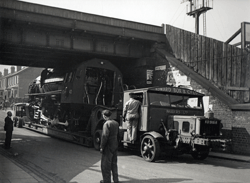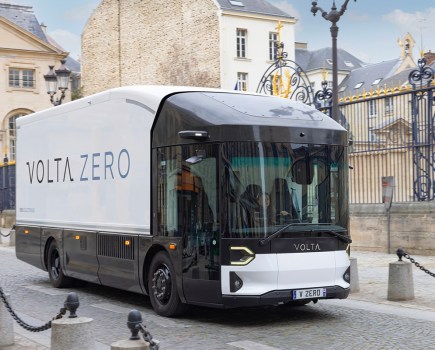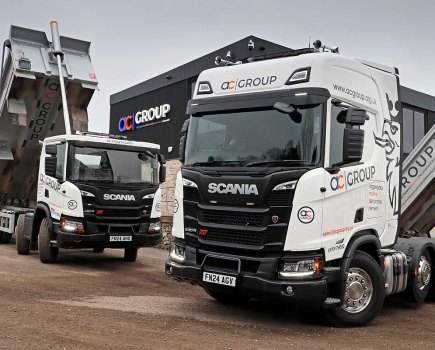 The owner of the unique Scammell Hundred Tonner, Maurice Hudson, has received a set of photo albums recording the vehicle’s working life during the 1930s and 1940s on behalf of the British Commercial Vehicle Museum in Leyland.
The owner of the unique Scammell Hundred Tonner, Maurice Hudson, has received a set of photo albums recording the vehicle’s working life during the 1930s and 1940s on behalf of the British Commercial Vehicle Museum in Leyland.
The albums from the William Towers Robertson Collection have been donated to the Museum’s archives by John Robertson.
Measured by load-carrying capacity, the Hundred Tonner was the world’s biggest road vehicle when it entered service in 1930. It has been on loan to the British Commercial Vehicle Museum since 1984 following its restoration by Maurice Hudson, who acquired it at the end of 1970s.
The Hundred Tonner (registration: KD 9168) was custom-built by Scammell for MRS/Edward Box of Liverpool, which at the time was one of Britain’s foremost heavy-haulage contractors. William Towers Robertson (John Robertson’s father) was responsible for the vehicle’s operational management.
One of KD 9168’s many impressive feats was the movement during the course of 1946-47 of 120 ‘Liberation’ class steam locomotives, each weighing 75 tons, from The Vulcan Foundry, Newton-le-Willows, where they were built, to Liverpool Docks for shipment as part of a post-World War II United Nations aid programme to war-ravaged countries of mainland Europe. All 120 locomotives were moved under a bridge near the Vulcan works, which allowed only three-quarters-of-an-inch clearance between the top of the load and the underside of the bridge.
The Hundred Tonner’s heaviest move was a 165-ton steel ingot, transported from a foundry to a steelworks in Sheffield. Other high-profile moves during the 1930s by what at the time was the world’s biggest road-going load carrying vehicle was a 35-ton propeller (the world’s largest), transported from London to Southampton for the Cunard Line’s RMS Queen Mary, then the world’s biggest ship.
KD 9168 is one of only two Scammell Hundred Tonners built. MRS originally commissioned the tractive unit and it trailer to haul steam railway locomotives built for export by Kitson’s of Leeds across the Pennines to Liverpool Docks. The vehicle was in service from 1930 until 1953.
For the last five years of its working life, it was operated by Pickfords as a result of the nationalisation of the road haulage industry in 1949. Despite the fact the Hundred Tonner has been built specifically for MRS and operated by the company for nearly 20 years, the sale to Pickfords was compulsory.






